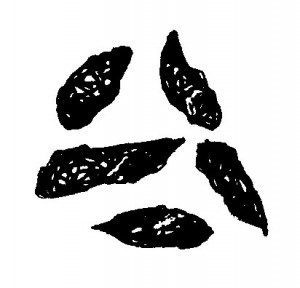Bat droppings and mouse droppings can be surprisingly similar at first glance, both being dark and small. However, a closer examination reveals key differences that help distinguish between the two. Understanding these differences can help you identify the source of the droppings and take appropriate action.
Key Differences Between Bat and Mouse Droppings
The primary difference lies in the animals’ diets. Bats are insectivores, meaning their diet consists almost entirely of insects. Consequently, their droppings are primarily composed of undigested insect fragments, specifically shiny bits of wings and exoskeletons. This gives bat guano a distinctive sparkly appearance under close inspection. Because the droppings consist of mostly undigested insect parts, they crumble easily into a fine powder, even when fresh.
In contrast, mice have a more varied diet that includes grains, seeds, fruits, and occasionally insects. While you might find some insect parts in mouse droppings, they are not the main component. Fresh mouse droppings have a soft, putty-like consistency and are often slightly shiny. As they age, they dry out and harden, losing their shine. Rodent hairs may also be present in mouse droppings.
Another key differentiator is the shape and size of the droppings. Bat droppings are typically cylindrical with blunt ends, measuring about ¼ to ½ inch in length. Mouse droppings, on the other hand, are smaller, ranging from 1/8 to ¼ inch long, and tend to have at least one pointed end.
 Mouse droppings, approximately 1/8 to 1/4 inch in length and often with pointed ends.
Mouse droppings, approximately 1/8 to 1/4 inch in length and often with pointed ends.
Finally, consider the location and distribution of the droppings. Bat droppings are usually found in concentrated piles directly beneath their roosting areas. Mouse droppings tend to be scattered more randomly and are less likely to be found in large piles.
Bat Droppings vs. Mouse Droppings: A Summary Table
| Feature | Bat Droppings | Mouse Droppings |
|---|---|---|
| Size | ¼ to ½ inch long | 1/8 to ¼ inch long |
| Shape | Cylindrical with blunt ends | Rod-shaped, often with pointed ends |
| Texture (Fresh) | Crumbly, breaks into powder | Soft, putty-like |
| Texture (Dry) | Dry, powdery | Hard, brittle |
| Color | Black, often with shiny specks | Black, may be shiny when fresh |
| Composition | Undigested insect fragments | Varied, may contain rodent hairs |
| Distribution | Found in piles | Scattered, rarely in large piles |
Identifying Droppings: Why It Matters
Correctly identifying the type of droppings you find is crucial for determining the appropriate course of action. Bat droppings, while an excellent fertilizer, can harbor harmful fungi that pose health risks. Mouse droppings, on the other hand, can contaminate food and surfaces, spreading diseases. If you’re unsure about the type of droppings you’ve found, consulting a pest control professional is recommended. They can accurately identify the pest and recommend effective solutions.
